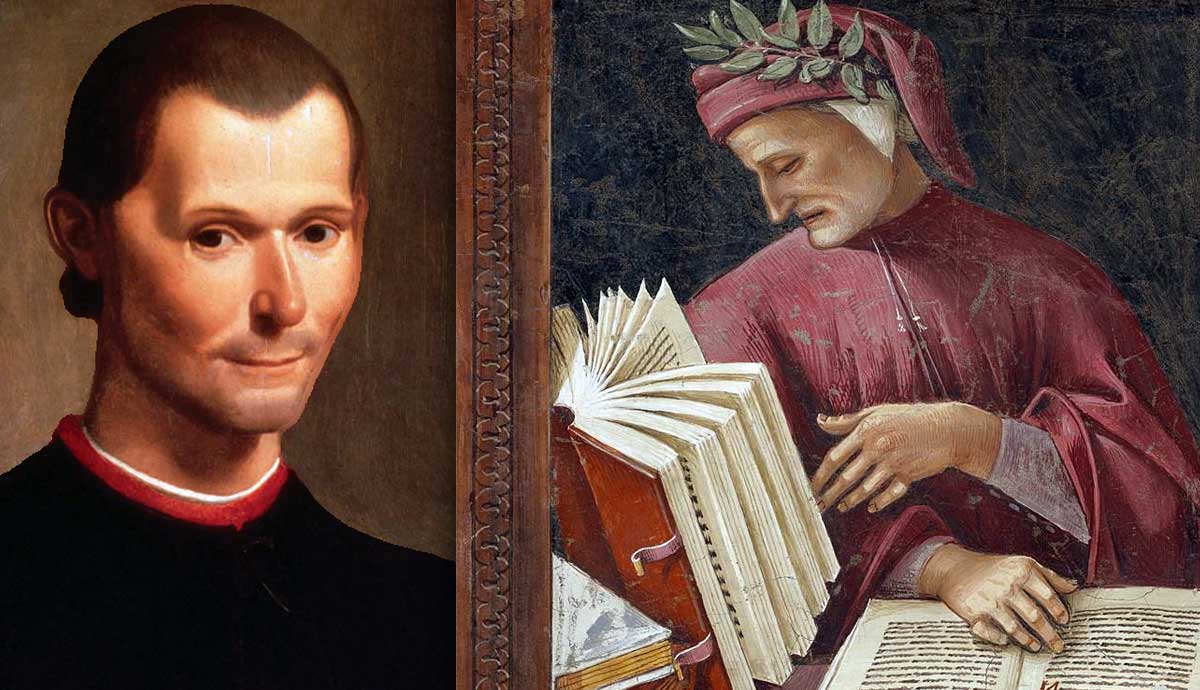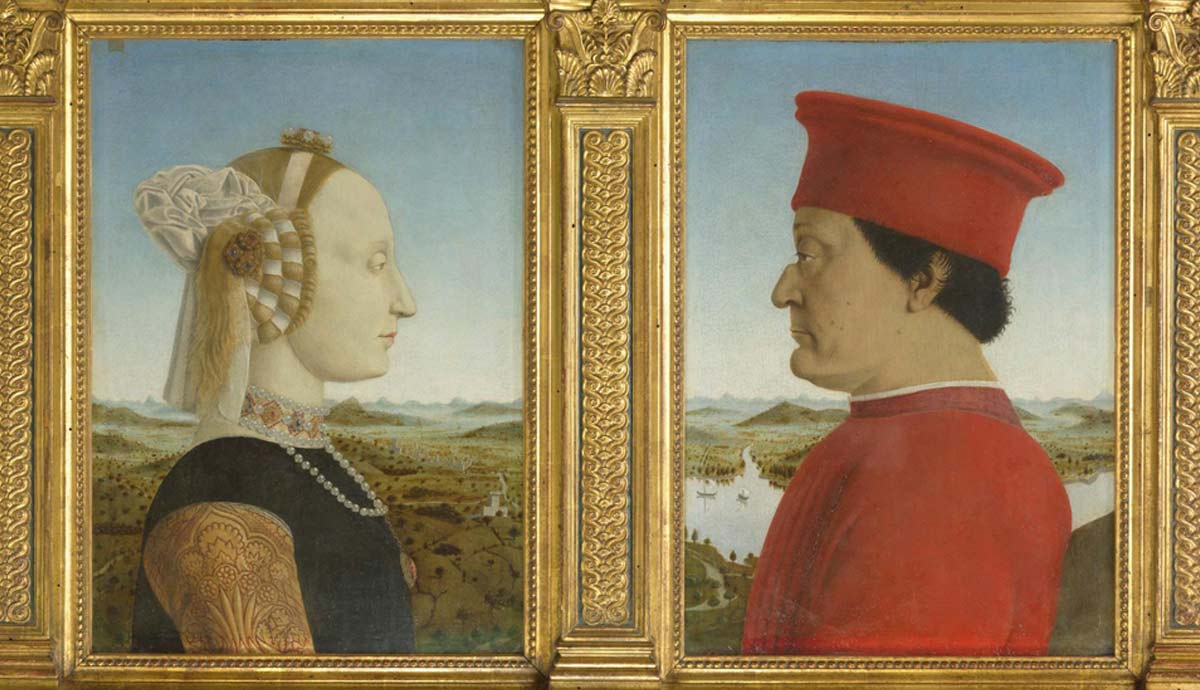
As a painter, architect, writer, and collector, Giorgio Vasari (1511-1574) embodied the idea of a true Renaissance man. His art scatters around central and northern Italy, a testament of his talent and the convulsed political scenarios he endured. In a time where artists were considered no more than manual workers, he achieved the respect and admiration of popes and dukes. Undoubtedly, his most influential work was the Lives of the Most Excellent Painters, Sculptors, and Architects, for which he earned the title of father of History of Art as a discipline.
The Origins of Giorgio Vasari

Giorgio Vasari was born on July 30, 1511, in Arezzo, Italy. He was the eldest son of a middle-class merchant family with artistic relations. His great-grandfather was the 15th-century painter Lazzaro Vasari, Piero della Francesca’s mentee, while his great-granduncle was the painter Luca Signorelli (1445-1523). Vasari worked as an apprentice at the workshop of the French glassworker Guillaume de Marcillat (1470-1523), who was famous for his work in the Cathedral of Arezzo.
Transfer to Florence

In 1524, Cardinal Silvio Passerini arranged for Vasari to move to Florence, 45 miles to the north. According to Vasari, Michelangelo taught him briefly before he left for Rome. Not everyone believes his claim, as it is known that he did not always write verifiable facts. Vasari also trained in Andrea del Sarto’s workshop, where he met future Mannerists Rosso Fiorentino and Jacopo Pontormo. He also established a friendship with Francesco Salviati. He shared lessons with Ippolito and Alessandro Medici from Piero Valeriano. His closeness with these Medici boys determined his career in several instances. For example, Ippolito transferred him from del Sarto’s workshop to Baccio Bandinelli’s for a few months until the Sack of Rome in 1527.
“Disegno” Above All

If there is one thing that Vasari believed in, it was the supremacy of disegno (drawing), one of the pillars of Florentine artistic tradition. Tuscan artists took pride in the intellectual process of a work of art evidenced by numerous preparatory sketches they made. At the time, those drawings were not considered works of art in themselves, but Vasari valued and collected them in a book called Libro de’ disegni (Book of Drawings), now lost. Together with the interest in classical Antiquity, Rome became the ideal location to sketch ancient ruins. Vasari traveled there for the first time in 1529.
Vasari the Painter

As years went by, Vasari built a network of friends, colleagues and patrons, and earned recognition. Back in Florence, he joined the Compagnia dei Pittori Fiorentini (Company of Florentine Painters) to work in the city. He belonged to the Mannerist movement, characterized by elongated and disproportionate figures, bold colors, and unnatural poses. Once settled, Vasari’s paintings for the Medici family helped legitimize their rule over Florence. Unfortunately, the assassination of Duke Alessandro convinced him of remaining unattached to aristocratic courts. He spent his career traveling throughout central and Northern Italy working on individual projects from different patrons.

According to Ingrid D. Rowland and Noah Charney in Collector of Lives (2017), Vasari enjoyed a reputation for being fast and punctual. This way he could work for different patrons in different cities. Nevertheless, after years wandering, Vasari finally entered Duke Cosimo I de Medici’s court in 1554. One of his masterpieces was the Sala degli elementi (Elements’ Room) in the Palazzo Vecchio. His iconographical program displayed mythological stories to connect the origin of the world with the origin of the Medici Duchy through the efforts of Leone X de’ Medici.

After that, Vasari worked on another room of Palazzo Vecchio, the Salone dei Cinquecento (Hall of the Five Hundred), an imposing space where Cosimo I held court and received dignitaries. Vasari’s monumental paintings celebrated Florence’s victory over Pisa by including ancient myths to enlarge its achievements and power.

While he worked on his patrons’ commissions, Vasari built a house for himself in Arezzo. Casa Vasari, as it is known today, was decorated with Christian and mythological stories. Liana de Girolami Cheney explains in her book The Homes of Giorgio Vasari (2006) how the Chambers of Fame, Abraham, Fortune, and Apollo have been confirmed to be painted by Vasari himself. He utilized different techniques: tempera, oil, and fresco. This house is not only an extraordinary example of Mannerist painting and Vasari’s style, but also of his personal preferences. After all, this was his house, not a commission. He moved in after marrying Nicolosa Bacci in 1550.

His last work was the interior of the Cupola of Santa Maria del Fiore. Together with Vincenzo Borghini, he planned a Last Judgment program. Unfortunately, Vasari died before he could finish the project. During his career, Vasari traveled from Florence to Bologna, Rome, Arezzo, Naples, Venice, and back, leaving an extensive trail of work. These are only a handful of his most important masterpieces.
Vasari, the Architect

Apart from being a talented painter, Vasari worked as an architect for his patrons. His major achievement was the Uffizi Gallery, commissioned by Cosimo I in 1560. Its original purpose was an office building, hence the name in Italian Uffizi (offices). Vasari designed a U-shape complex connected to the Palazzo Pitti through a bridge now known as the Vasari corridor. Vasari died before the completion of the construction in 1580. It seems appropriate that, given his influence in Western art history, his building became a gallery for some of the greatest art collections in Europe.

In Rome, Vasari supervised the construction of the Villa Giulia, a countryside retreat for Pope Julius III, where he proved his abilities as an architect and garden designer. He worked with Bartolommeo Ammannati and Jacopo Barozzi, with interventions by Michelangelo. According to Vasari, the Nymphaeum, an artificial grotto (cave) and a masterpiece of Mannerist architecture, was his creation. However, the inscription of Ammannati’s name contradicts his statement.
Vasari, the Renaissance Influencer

Vasari was an influential voice in Italy, being friends with patrons and artists all around. One of those friends was Paolo Giovio, an important physician, who collected portraits of illustrious men for his museum (1536). During a dinner, Cardinal Farnese requested Vasari’s help to research artists’ lives following Giovio’s project. Later, Giovio entrusted him with the writing of a book. This was an unprecedented project that deemed artists worthy of recording their biographies. Vasari published his Lives of the Most Excellent Painters, Sculptors, and Architects in 1560.
The Lives follow the evolution of Italian art from Cimabue to Michelangelo. Vasari recalled ancient texts and tools to construct his narrative, favoring a linear account based on the superiority of the next generation. Stories similar to how Leonardo da Vinci outdid his master Verrocchio abound in various biographies. He published a second edition in 1568 with more artists and corrections of certain events. Despite its critiques, it became an essential reading for centuries. Recently, the National Library of Spain acquired a copy of Lives owned by El Greco with previous annotations from Federico Zuccaro.
Vasari was deeply interested in artistic training. As a member of the Company of Florentine Painters, he contributed to its evolution into a modern guild. Moreover, he founded the Accademia delle Arti del Disegno (Academy of Design) with the approval of Duke Cosimo in 1563. There, students took lessons from Benvenuto Cellini, Giambologna, and Benedetto Varchi, among others.
Critiques of Vasari’s Method

Even in his lifetime, Vasari’s Lives received harsh critiques. The truth is that more than a scholar, Vasari was a skillful storyteller who took artistic liberties to pass his message. A sense of superiority permeated among Tuscan artists and they underestimated art from other regions of Italy, such as Venice. Not surprisingly, almost all of the lives collected in the first edition are Tuscan, despite Vasari’s claim of presenting Italian artists. It seems like his experience throughout Italy did not open his mind. The Zuccaro brothers (from Urbino) expressed their discontent towards Vasari, accusing him of holding prejudices and lacking objective judgement. The second edition contained more living artists, who found errors and imprecisions in their stories.

Aside from the local bias, Vasari let his personal feelings interfere in his writing. Michelangelo enjoyed long and flourishing praises, whereas rivals such as Agnolo Bronzino and Baccio Bandinelli suffered from unfortunate accounts. Today, scholars question the veracity of Vasari’s words. We know that much of his information comes from oral history, which is impossible to verify. Moreover, he left details out if they did not support his narrative and exaggerated others that did.
Feminists question, where are the women in Vasari’s Lives? He only included Properzia de Rossi (1490-1530), a sculptress from Bologna. At the end of her biography, Vasari mentioned three other women artists: Sister Plautilla (1524-1588), Madonna Lucrezia (16th century), and Sofonisba Anguissola (1532-1625). Unfortunately, it is a short account written in a condescending language.
The Legacy of Giorgio Vasari

Despite the previous critiques, Vasari continues to be one of the most influential figures in Western art history. The importance that we bestow upon an artist’s signature, identity, and purpose calls back to Vasari’s biographical accounts. Furthermore, his work reflects an ongoing disdain towards the Middle Ages, as well as the idea of a progressive linear evolution in art history. While these ideas were not only his, his work disseminated them for generations. The tremendous impact he had on the subsequent centuries, earned him the title of the Father of Art History.









